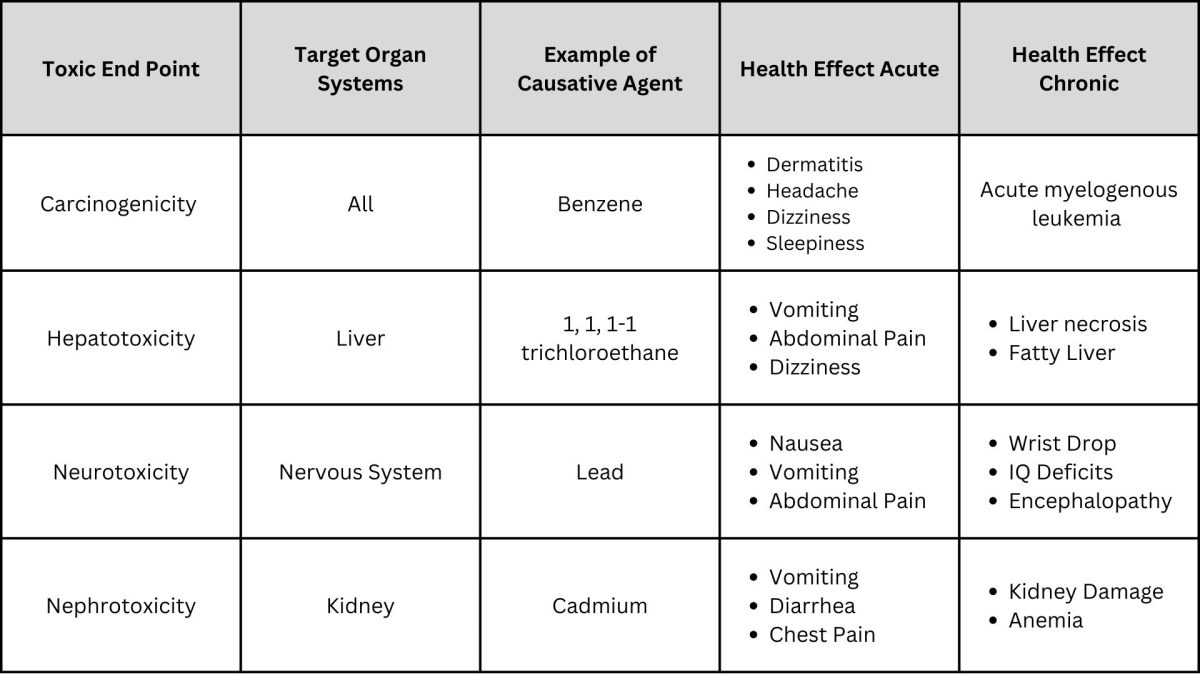Routes and Extent of Exposure

Dermal contact does not typically result in as rapid absorption as inhalation, although some chemicals are readily taken in through the skin. Many organic compounds are lipid (fat) soluble and can therefore be rapidly absorbed through the skin and mucous membranes. Absorption is increased by damage to the skin and by warm weather, and some areas of the body (e.g., the groin) absorb chemicals faster than others (e.g., the hands).
Ingestion is a less common route of exposure for emergency response personnel at hazardous materials incidents. However, incidental hand-to-mouth contact, smoking, and swallowing of saliva and mucus that contains contaminants may also result in exposure by this route. In addition, emergency medical personnel in both hospital and prehospital settings treat chemical exposures in patients who have ingested toxic substances as a result of accidental poisonings or suicide attempts.
Compounds may also be introduced into the body through injection, although this is a relatively uncommon scenario in spills or discharges of hazardous materials. Explosions may result in injection injuries and lead to embedded foreign bodies, which may themselves be chemically contaminated.
The route by which personnel are exposed to a compound plays a role in determining the total amount of the compound taken up by the body because a compound may be absorbed by one route more readily than by another. In addition, the route of exposure may affect the nature of the symptoms that develop. The amount of the compound absorbed by the body also depends on the duration of exposure and the concentration of the compound to which one is exposed.
It is important to recognize that children may be more susceptible to many toxic exposures. A child’s immature central nervous system, liver, and renal system increases his or her susceptibility to injury as a result of exposure to chemicals. Children are also likely to receive a higher dose relative to body weight than an adult. This occurs for a number of reasons. First, children are shorter than adults and since most toxic gases are heavier than air, the concentrations increase as you get closer to the ground. Second, children have a larger lung surface area relative to their weight than adults, as well as a greater respiratory volume (liters/min/kg of body weight). It is also probable that the child’s lung is a more effective adsorbent surface than that of the adult. Third, children have a larger skin area relative to their weight than do adults, allowing more effective surface area for absorption in dermal exposures. A child’s skin is more easily penetrated by chemicals, allowing for a more rapid and effective dermal absorption. Finally, children are more likely to ingest toxic chemicals because of increased hand-to-mouth behavior, including pica. All of these factors may lead to an increased dose relative to size in children as compared to adults, even when they all are exposed to the same scenario.
A complex relationship exists between the total amount of the compound absorbed by the body (dose) and the concentration of that compound in the environment. This relationship is important for emergency response personnel to understand because the adverse effects produced by a toxic compound are often related to the dose of that compound received by a patient. However, because we usually only monitor the concentration of the toxic substance in the environment (e.g., parts per million (ppm) of a compound in air), the actual dose of the compound received by the patient is seldom known. Factors specific to the exposed individual, such as area of skin surface exposed, presence of open wounds or breaks in the skin, and the rate and depth of respirations, are important in estimating the dose of the compound received by the patient. Injuries that disrupt the skin may lead to absorption of chemicals that would not normally penetrate the skin.
